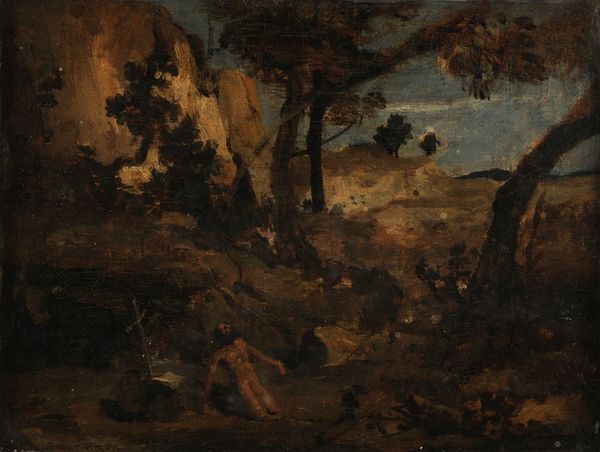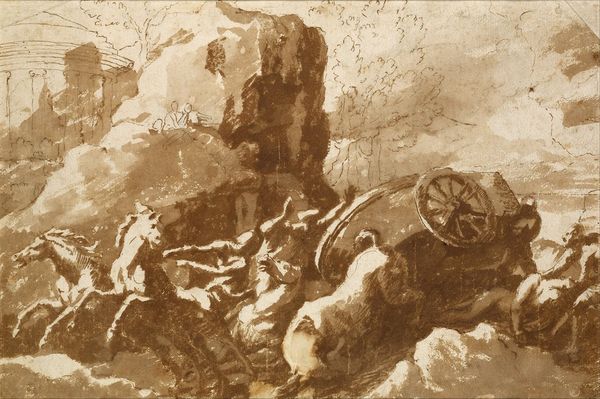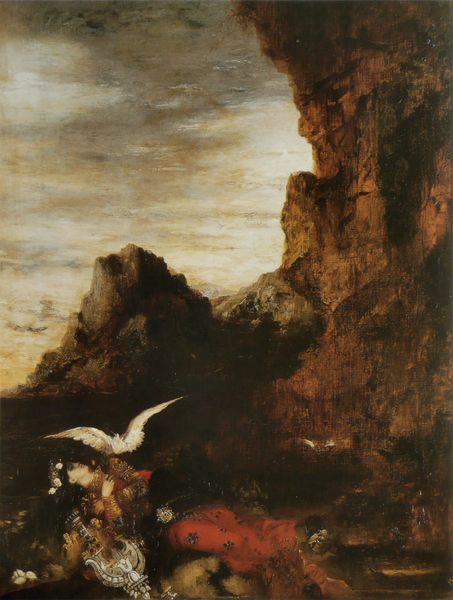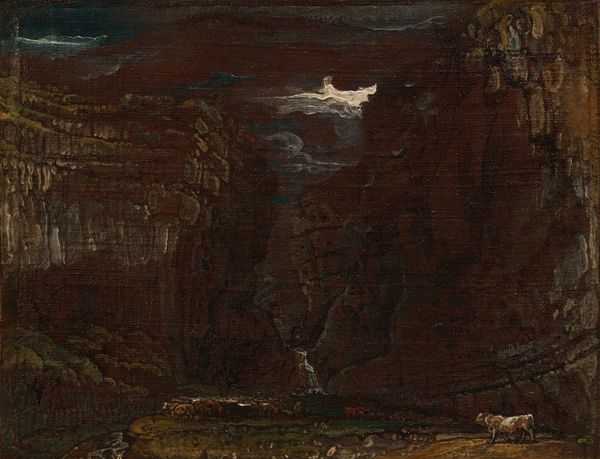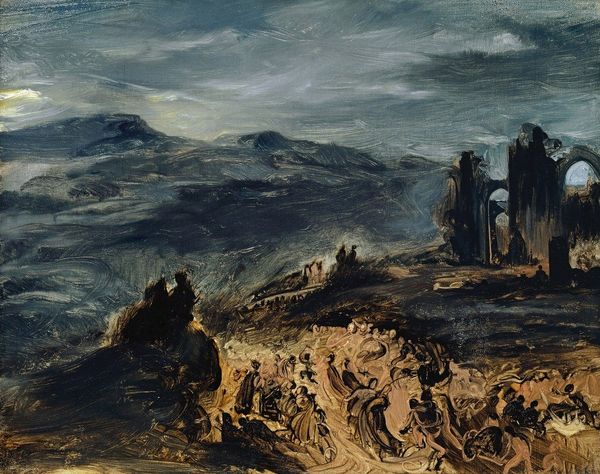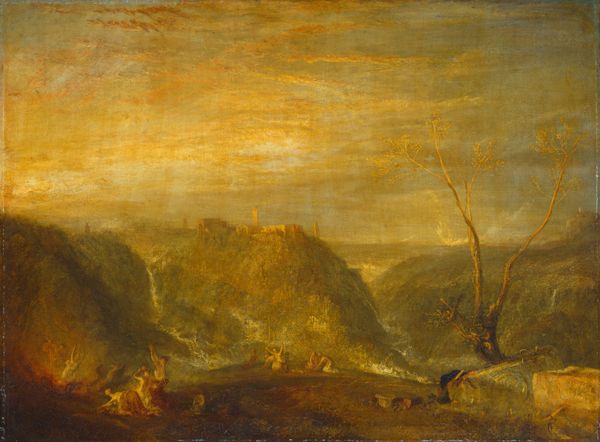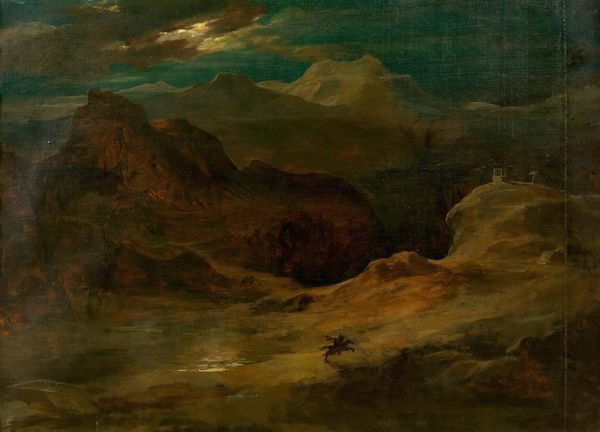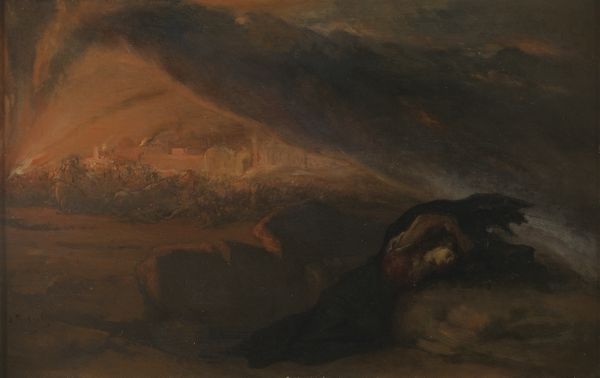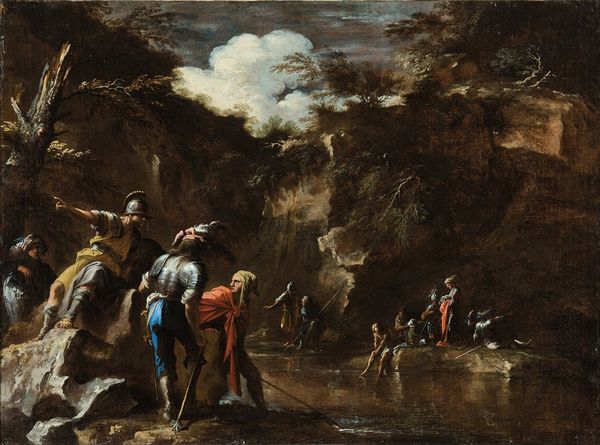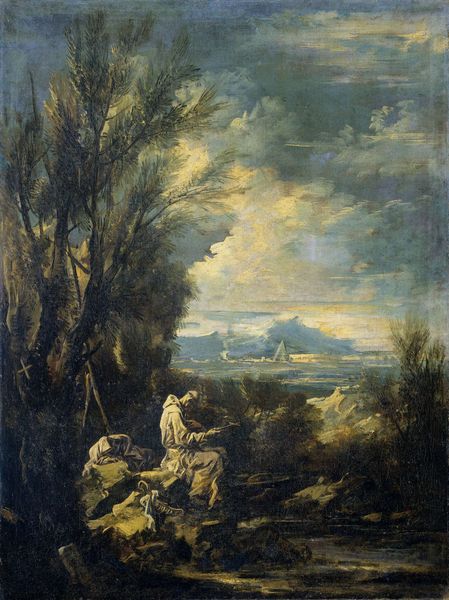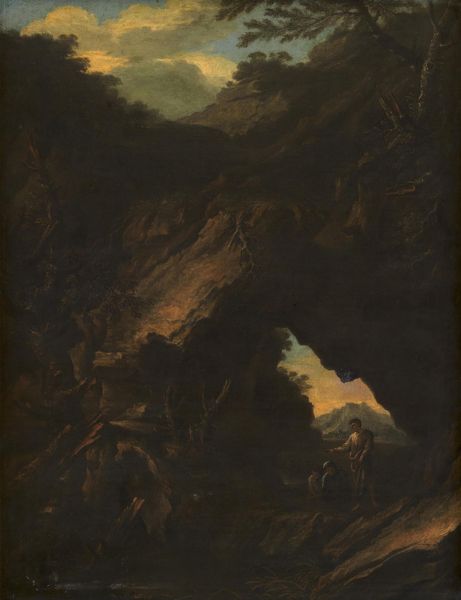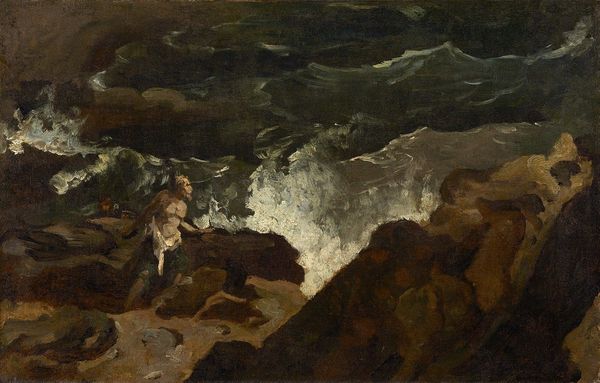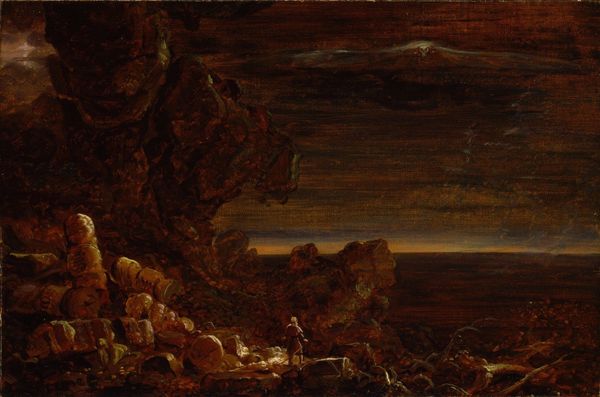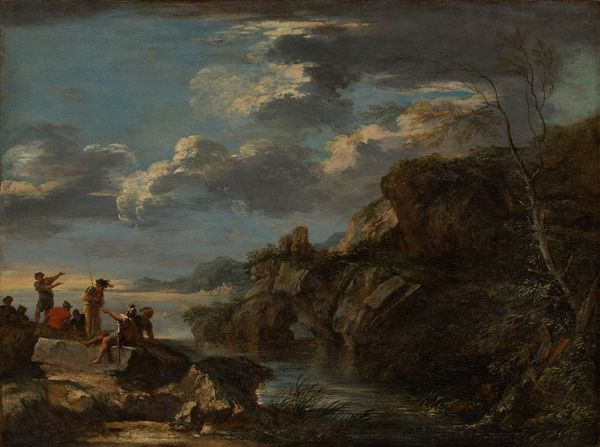
Copyright: Public Domain: Artvee
Curator: Here we have Honoré Daumier's oil painting, “Don Quixote and the Dead Mule,” created sometime after 1864. Editor: My first impression is one of desolation. The palette is muted, almost monochromatic, which gives the landscape a very bleak feel. Curator: Indeed. Daumier utilizes a restrained color scheme here, dominated by earthy browns and greys. Observe the artist’s masterful use of chiaroscuro, with dramatic contrasts of light and shadow which help define form and intensify the emotional impact of the scene. Note the loose, expressive brushwork; it gives the piece a sense of immediacy. Editor: Absolutely, and the slumped figure of the dead mule contrasts starkly with the upright posture of Don Quixote. There's an inherent critique embedded, wouldn't you say? The romantic idealism of Quixote, so detached from reality, leading to literal and figurative death around him. The figure of Sancho Panza, almost a shadow behind Don Quixote on horseback, also communicates how this sort of unattainable quest impacts not only the self, but an entire community. Curator: From a purely formal standpoint, the composition guides our eye along a carefully constructed path. The diagonal of the dead mule in the foreground leads back to the figures of Don Quixote and Sancho Panza, framed against a distant horizon. The dynamic asymmetry creates a visual tension. Editor: The tension is palpable. Daumier made several artworks focusing on Don Quixote. We should think about this recurring subject. I’d propose that it served Daumier as a lens to interrogate the consequences of chasing fantasy at the expense of material realities—a pointed critique perhaps aimed at the political climate of his time, the social costs of progress. Curator: A fascinating interpretation, informed by the sociopolitical context of Daumier's life. However, viewing the art piece as a formal arrangement reveals it's own complexities independent of any contextual background. The work itself asks what makes one image striking, dynamic, unforgettable? Editor: And to bring the context in simply helps viewers consider who has access to “forgetting,” or perhaps fantasizing? We could keep going back and forth between materiality and form forever. It's interesting! Curator: It is indeed. There’s a balance, I think, and each approach can complement the other, in a way.
Comments
No comments
Be the first to comment and join the conversation on the ultimate creative platform.
